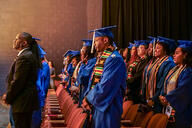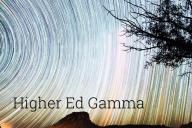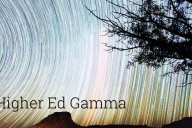You have /5 articles left.
Sign up for a free account or log in.
Perhaps you recall Whit Stillman’s 1998 cult classic, The Last Days of Disco—a gently ironic film chronicling the twilight of New York City’s club scene in the early 1980s. Think Studio 54: all sequins, spectacle and seduction. The city may have been a mess—gritty, dangerous, chaotic—but it was also a site of fantasy, creative energy and glamour.
It was a world teetering on the edge of disappearance. Disco wasn’t just a genre—it was a shared language, a style, a mood. And the film captured something deeper than the end of a nightlife trend; it registered the closing of a cultural chapter.
I find myself feeling that same sense of cultural dusk when I reflect on the current state of intellectual life in the academy. During my years at Columbia (2007–2012), the university felt like the most intellectually vibrant and exhilarating place on earth. It reminded me of Yale in the mid-1970s—teeming with bright minds, provocative thinkers and conversations that pushed you beyond your inherited frameworks.
New York, then, as the historian Linda Gordon once said, was “Disneyland for adults”—a playground not just for the arts, theater and music, but for ideas. It was a place where you could still believe in the university as a sanctuary for conversation, curiosity and confrontation—not just of others, but of oneself.
That world now feels like a closed chapter.
Columbia and the Academic Götterdämmerung
It is difficult to read Rashid Khalidi’s anguished op-ed in The Guardian—“Does Columbia still merit the name of a university?”—without feeling the full weight of what is unraveling at Columbia. Equal parts polemic, lament and indictment, his words are searing. But beyond the specifics of his critique lies something even more unsettling: a challenge to our very conception of the university.
For Khalidi, the moment is not simply about administrative missteps or ideological bias. It is existential. Columbia, he argues, has capitulated. It is no longer a sanctuary for free inquiry, but a hollowed institution where trustees, donors and government officials dictate the limits of what can be taught and who may speak.
He warns of a campus where pedagogy is no longer the purview of faculty, but of politically appointed bureaucrats—“vice provosts for inclusive pedagogy” who, in his view, mask ideology under institutional language.
You may disagree with his tone or conclusions. But to dismiss his argument outright would be a mistake. Because at the heart of Khalidi’s anguish is not simply a political position—it is grief. And that grief is shared, across ideological lines, by many who sense that something foundational is slipping away.
What is being lost, Khalidi suggests, is not just academic freedom, but the very conditions that once made dialogue possible: trust in institutional neutrality, a belief in shared inquiry and the fragile hope that we might still think together, even when we profoundly disagree.
We are witnessing not just polarization, but the fraying of the university’s social contract. At Columbia—as on many elite campuses—there is a growing perception that the university can no longer hold space for opposing truths.
That grief is becoming accusation. That solidarity is being met with surveillance. That dialogue is collapsing under the weight of moral absolutism.
If Columbia becomes a place where grief cannot be shared, where disagreement is mistaken for betrayal, where disruption supplants dialogue and where institutional authority replaces communal deliberation, then it ceases to be a university in the richest sense of the word. It becomes something else: a brand to be managed, a liability to be contained, a symbol to be protected rather than a community to be cultivated.
That is not just Khalidi’s fear. It is, I suspect, a quiet dread gnawing at many in the academy, whether they express it publicly or not.
What Comes Next?
It is one thing to lament the present moment from afar—to decry polarization, the erosion of collegiality and the rise of performative outrage. But it is another, far more difficult, thing to ask, What now? How do we rebuild trust in an environment shaped by trauma, fear and righteous anger?
The real challenge before us is not merely describing the collapse—it is learning how to harness grief, not as a weapon, but as a force for institutional renewal and moral clarity.
Grief, after all, is not inherently destructive. It sharpens our attention. It reveals what matters. It calls us to care. But if unacknowledged or unchanneled, grief can harden into rage—or be captured by ideology and redirected toward division.
The university must become a place where grief is held—not silenced, not instrumentalized, but acknowledged, processed and made legible. It must become a place where we can grieve collectively—without being forced into ideological camps. Where students and faculty alike can mourn injustice, loss and violence while remaining open to inquiry, to debate and to one another.
This requires more than performative statements. It demands more than policy tweaks. It requires a radical reimagining of the university’s moral and civic mission.
Rebuilding the Academy’s Moral Infrastructure
This vision of the university would not eliminate conflict. It would not guarantee consensus. But it would teach us how to hold disagreement with dignity, how to speak from conscience without forsaking curiosity and how to see even those we oppose as fellow moral agents.
Trust is not rebuilt by calling for dialogue alone. It is rebuilt through consistent, courageous practices—by faculty who model integrity, by administrators who resist easy appeasement, by students willing to listen before responding. Trust is rebuilt through rituals of engagement: structured conversations, reading groups, joint inquiries and communal reflection.
And it is rebuilt by returning to the heart of what universities are for: not just credentialing or knowledge production, but the formation of people who can live with complexity, think with nuance and speak with both conviction and humility.
This is slow work. But it is the only work worth doing. Because if we abandon it, we do not merely lose a mode of education. We lose our capacity to live in pluralism. We lose the possibility of a shared intellectual and civic life.
The Fragile Center: Between Silence and Slogan
Right now, elite campuses are locked in a standoff. On one side are those who believe the university has lost its neutrality and succumbed to political capture. On the other are those who feel the university has failed to meet the moral demands of the moment.
Both views contain truth.
Universities have become more ideologically charged—but often because other institutions have abdicated their moral authority. The media, the church, government—many have lost public trust. And into that vacuum, the university has been drawn, asked to play roles it was never designed to fulfill.
At the same time, the university’s mission has always been more than technocratic neutrality. It has a moral dimension. When universities retreat from the great ethical and political questions of the age, they risk becoming irrelevant.
So how do we move forward?
6 Steps Toward Renewal
Here are several steps toward renewal.
- Recenter the educational mission—with moral clarity. Clarify that the university exists to cultivate understanding, not enforce orthodoxy; to educate, not indoctrinate.
- Establish structured forums for dialogue. Invest in intentional spaces—moderated panels, facilitated conversations, shared readings—where disagreement is part of the learning process.
- Develop a third space: neither silence nor slogan. Create frameworks that allow for principled critique without collapse into polemic. Encourage thoughtful dissent and deliberated institutional statements.
- Invest in mentorship and intellectual formation. Prioritize advising and mentorship as forms of ethical apprenticeship. Help students navigate moral ambiguity with courage and compassion.
- Reimagine the university’s civic role. Model what deliberative institutions should look like—open to criticism, slow to judgment and committed to the common good.
- Create time for institutional reflection. Introduce “sabbath” spaces—pauses for community reflection, care and conversation. Build the muscle of institutional self-awareness.
The way out is not a return to sterile neutrality, nor a surrender to ideological trench warfare. It is a renewed commitment to the university as a place of intellectually honest, morally serious, emotionally grounded inquiry.
We cannot rebuild the academy as a community of learning without acknowledging its wounds. But neither can we afford to become paralyzed by them. Renewal will not come from slogans or silences—but from the slow, painstaking work of rebuilding trust, one classroom, one conversation, one relationship at a time.
Columbia’s Unique Role
Columbia, as both symbol and center stage for today’s campus tensions, sits at the very epicenter of the storm. What happens at Columbia—how it chooses to respond to the Trump administration demands, protests, free speech controversies and community breakdown—will set the tone not just for elite institutions but for universities nationwide.
Columbia’s singular status arises not only from its location, its legacy of student activism or its institutional visibility, but from something deeper: the intellectual integrity and coherence afforded by its Core Curriculum.
This is what gives Columbia a unique opportunity: to lead not through administrative decree or PR positioning, but through curricular vision.
It should revive Contemporary Civilization B—a course grounded in the ethical and political dilemmas of the present. It should bring students face-to-face with texts, arguments and experiences that do not easily resolve. And it should insist that education is not about producing consensus—but about forming citizens.
Unlike the timeless moral, theological and philosophical sweep of CC-A or the literary foundations in Literature Humanities, CC-B gave students a structured, rigorous and morally serious way to engage with urgent, real-world questions: war and peace, technology and human values, democracy and totalitarianism, rights and responsibilities, race, gender, inequality and power.
It was not designed to deliver the answers to these problems, but to offer frameworks, intellectual traditions and critical lenses through which to interrogate them. It treated students not as ideological vessels to be filled or performers to be judged, but as citizens in training—capable of grappling with ambiguity, sitting with discomfort and learning to think with depth and seriousness about what they believe and why.
In an age of ideological hardening, moral absolutism and performative partisanship, we need exactly this kind of space: structured, curated, pluralistic and dialogic.
Other campuses may host protest or harbor division—but Columbia has a curricular mechanism ready to be reimagined. Unlike many universities that have abandoned general education as a serious, intentionally designed matter, Columbia retains a common intellectual vocabulary through its Core. That gives it a level of coherence—and cultural authority—that few institutions can match.
If Columbia were to say, “We’re going to create, as part of the Core, a new course on Contemporary Dilemmas—taught in small seminars, drawing from political theory, ethics, literature, economics and global studies, designed to model and teach respectful disagreement and civil engagement”—some institutions might follow. It could become a national model.
Such a course would:
- Ask students to read and respond to opposing viewpoints from across political, cultural and historical spectra.
- Invite faculty from different departments to co-teach or guest lecture, modeling interdisciplinary thinking and intellectual generosity.
- Require students to write not just argumentative essays, but reflective responses and public-facing work.
- Center not around consensus, but around complexity and community.
This would be a bold institutional move—but not an impractical one. It builds on Columbia’s strengths. It sidesteps the culture-war trap of “DEI versus Western Civ.” It refuses to surrender the university’s role as a site of discernment. And it gives a new generation of students the tools not just to critique the world but to live responsibly in it.
A Higher Calling
Columbia can’t—and shouldn’t—silence its protests. But it can help shape how they evolve. It can say, “We see the pain and the urgency. And we believe the classroom is where that urgency must go to be transformed—into thinking, into empathy, into serious engagement with ideas.”
It can reassert the university’s ancient calling: not to end conflict, but to elevate it—to bring it into dialogue with the best that has been thought and said and to hold it there, long enough to generate understanding.
In this fractured moment, Columbia has the power—and perhaps the obligation—to lead not by administrative finesse, but by pedagogical courage. To take the very thing it’s most famous for—the Core—and make it speak to this time, these dilemmas, these students.
Toward a New Moral Mission
Whit Stillman’s The Last Days of Disco wasn’t just about a fading music scene. It was about the end of a communal sensibility—a shared cultural grammar.
I think often about that mood—not to romanticize the past, but to mourn the narrowing of what is possible. The university, too, once offered a grammar for complexity. Today it often feels reduced to reactive language—slogans, statements, silences.
But it doesn’t have to be that way. Columbia—and institutions like it—can lead not through spectacle or performance, but through curriculum, courage and care. They can show what it means to educate the whole person. They can remind us that grief is not the end of dialogue, but its beginning.
That would be a legacy worthy of this moment.
And it is still within reach.



